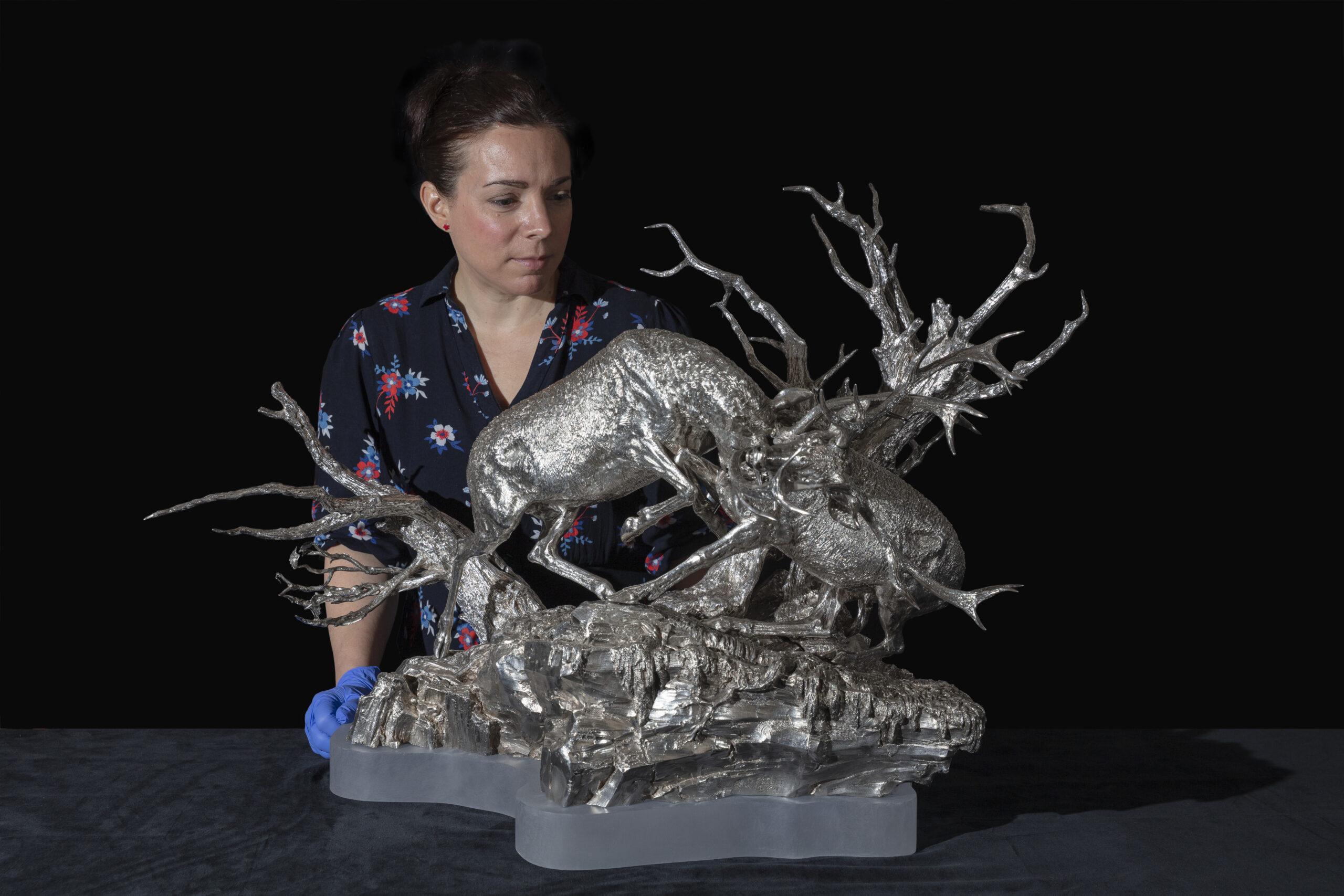‘Dazzling’ Victorian silver sculpture goes on public display in Greater Manchester after fears it was lost
A long-lost masterpiece of Victorian silverwork has been saved and is now on display to the public in Greater Manchester.
Anyone taking a trip over to the National Trust’s historic Dunham Massey property, on the border of Greater Manchester into Cheshire, this summer will get to see the ‘dazzling’ sculpture called Stags in Bradgate Park – which was commissioned by a former owner in a defiant gesture to the society that shunned him.
The dramatic sculpture of two rutting Red Deer stags, commissioned in 1855 by George Harry Grey, 7th Earl of Stamford, was said to be an ‘act of love and rebellion’.
It also serves as a symbol of ‘locking horns’ with the society that ostracised him over his marriage to a woman considered ‘beneath him’.
“This isn’t just silver – it’s a story,” says James Rothwell, who is the National Trust‘s curator for decorative arts.
“A story of a man who fell in love with a woman that society deemed unworthy. When the Earl married Catherine Cox, whose colourful past was said to have included performing in a circus, Victorian high society was scandalised. Even Queen Victoria shunned the couple at the opera and local gentry at the horse races in Cheshire turned their backs on them.”
Modelled by Alfred Brown and crafted by royal goldsmiths Hunt & Roskell, Stags in Bradgate Park is a meticulously-detailed depiction of nature, and was considered a ‘sensation’ in its day.
Showing the rutting deer positioned on a rocky outcrop with gnarled hollow oaks, it graced the pages of the Illustrated London News, was exhibited at the London International Exhibition of 1862, and at the Paris Exposition Universelle of 1867 – both of which were events that drew millions of visitors.
The silver centrepiece was the celebrity art of its time, paraded through streets and admired by the public like no other.
Gradually over the years, some of the Earl of Stamford’s silver collection has been re-acquired for Dunham Massey, and this particular world-renowned sculpture, thought to be lost for decades and feared to have been melted down, has miraculously survived with its ‘dramatic’ central component being all that is left.
“The sculpture is not only a technical marvel, with its lifelike depiction of Bradgate Park’s rugged landscape and wildlife, but also a dramatic human story key to the history of Dunham Massey,” added Emma Campagnaro, who is the Property Curator at Dunham Massey.
Read more:
- Manchester Museum saves a ‘national treasure’ to ensure it stays in the UK
- Two new immersive installations are coming to Dunham Massey for the summer
- Greater Manchester museum crowned the best FREE museum to visit in the UK
“It speaks of nature, of craftsmanship, and of a couple who chose each other over status and what others thought of them.”
The sculpture has now gone on display at Dunham Massey from Thursday 26 June.
Featured Image – James Dobson (via Supplied)
